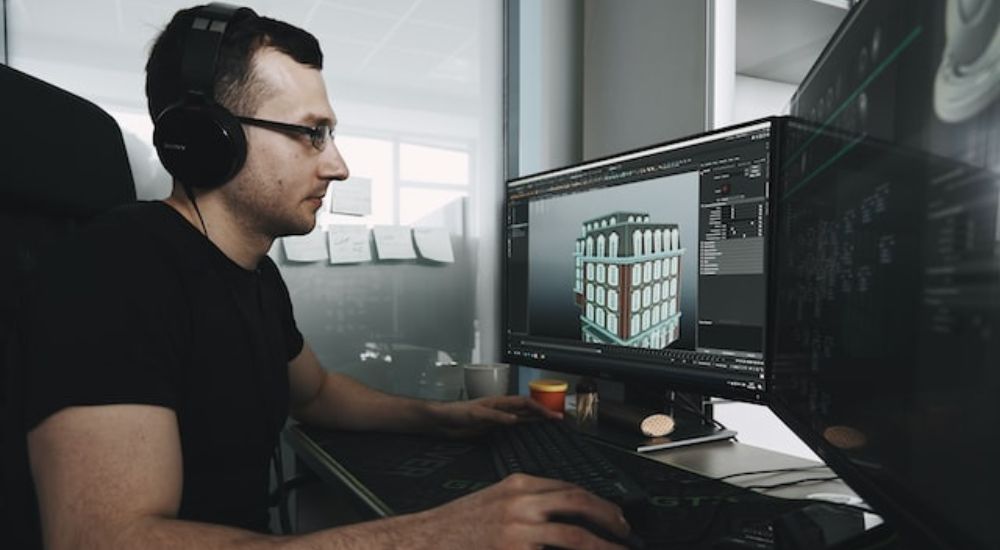Love them or hate them, games are here to stay. According to Statista, there were almost 3 billion gamers around the world across all platforms, which makes gaming a massive industry.
With this in mind, it’s no surprise that many aspiring game developers have come into the industry – with many, such as Toby Fox (Undertale) and Markus Persson (Minecraft), making a name for themselves.
When it comes to designing 3D games, there are many elements you will have to juggle at once. Some will be set in stone from the very beginning and will dictate every facet of your game while others will be only be defined after some prototyping and brainstorm sessions.
Game design is a multistep process that requires a lot of organization, imagination, attention to detail, research and time. It doesn’t matter whether you are a game designer at a major development studio or if you’re just getting started with Unity to create a very basic game, the design process must be very organized and leave no room for ambiguity.
In this post, we will talk about how to design 3D games, give you some tips to get you started with your Game Design Document (GDD) and a brief talk about the softwares available for designing 3D assets!
Get your note-taking tools and let’s get started!
Define your genre(s) and your game’s concept
Well, you have to agree that you can’t go through the creative process (which in our case is designing a game) if you don’t have an idea, right?
This is why the very first thing you should do is to think of the game you want to make. If you’re developing your first game, please make sure to start small and simple!
In order to get your brain gears turning as quickly as possible, here are some questions to ask yourself:
– What kind of game do I want to make? Is it a looter-shooter like Borderlands 3? Is it an action RPG like Path of Exile and Diablo, a casual arcade game or something else?
– What is or has been trendy in media? What kind of games have been popular recently?
– What is the core gameplay loop like? How difficult will it be?
– What are some of the mechanics and features you will include in your game?
– Who is your audience? For what devices will you develop your game?
Just a reminder that you are not limited to a single idea at any given time as, in this step, you’re brainstorming. Make sure to jot those ideas down and cull them until you have solid answers to those questions!

Write a Game Design Document (GDD)
It might be surprising, but designing a game involves impressive amounts of research.
Once you know what kind of game you want to build, research other games in the genre, annotate what they do well and sprinkle on top of it with a touch of your own.
While at it, make sure to create a Game Design Document, which will serve as the brief for your project, outlining your game’s idea, its genre, story and characters, core game mechanics, gameplay loop, level/world design, lore, art style, some sketches to be used as reference during the 3D design phase and a monetization strategy.
Furthermore, you will need to determine how much agency players will have, which challenges they will take on, talk about how the balance between difficulty and playability will be achieved, what the tutorial, interfaces and controls are going to be like and so on. And, yes, those details should all be in your GDD.
As you put together your document, there are three game design principles to follow when designing your game:
1. Stick to one core mechanic;
2. Make your game easy to understand while slowly introducing complexity: difficulty and playability must be balanced;
3. Introduce rewards from time to time;
If you are planning on building your game as a team, then having the GDD within arm’s reach will be of help as it will put everyone on the same page. It will also be of great use when trying to guarantee funding for your game and pitching it to potential investors, who want to see a detailed plan before stepping in.
In addition, the GDD allows you to identify potential pitfalls and lets you see which professionals you will need to hire/outsource in order to develop your vision, helping you avoid last minute setbacks that may hinder the creation of your game.
Get your hands dirty and start creating your 3D game assets
Once the research part is done, you will have to choose the game engine that will serve you best. Out of the bunch, two are the most used by 3D game developers: Unity is the best bet for beginners and smaller projects while Unreal Engine is the usual choice for high-end games. Still, if you have trouble deciding, make sure to give our other article a read!
When it comes to designing and creating 3D assets, there are multiple softwares that are up to the task.
Autodesk 3ds Max and Maya: for professionals
3ds Max and Maya are two Autodesk softwares that work extremely well in tandem, making up a substantial share of the 3D game industry. Maya is better suited for movies/cinematics and the creation of visual. 3ds Max, on the other hand, is better geared toward 3D modeling, making it a top choice for 3D game artists.
3ds Max can handle the full workflow of 3D modelers (modeling, rigging, animation and rendering) and, when using it, objects start as meshes, which you can convert into editable polygons down the line. Their elements can be modified in a wide variety of ways, making it a versatile software for all things 3D.
Being complete softwares made for professional studios, they require massive amounts of money every year for access to Autodesk’s suite of apps, which costs an eye-watering $1,785 a year.
ZBrush: for digital sculpting
ZBrush is often called the best digital sculpting software and, honestly, we agree. While it’s possible to design and create 3D models inside ZBrush, other softwares do it better, but in sculpting capabilities it is unmatched. It’s a software that is widely used to create skin/material imperfections and realistic looking 3D environmental assets.
In addition, ZBrush also has onboard ornamental brushes, texture randomization, and it’s possible to create custom brushes to apply textures only where they are necessary – all that while following the surface flow.
ZBrush is 100% free for non-commercial use. Otherwise, you will have to spend $359 per year per user or buy a perpetual license for $895.
Blender: FREE and open source
Blender is the favorite 3D game design software of beginners and seasoned artists alike, and time has shown it can be a free alternative to the expensive aforementioned softwares.
This software features mesh modeling and sculpting, which makes it awesome for character design, a solid set of geometry modifiers, amazing physics-based simulation capability for many materials, excellent UV texturing and many other things. It’s also possible to create scripts and install add-ons to make your life as a 3D designer easier!
Even though Blender can do it all, getting started with it is daunting as the interface is complex, which can be hard getting used to. However, if you can make it past the initial learning curve, Blender will serve you well for most intents and purposes!

What is the best programming language to make 3D games?
The best programming language for making 3D games is debatable, as there are a few different options out there. However, some of the most popular choices include C#, C++, and Java.
Each one offers its own set of advantages and disadvantages when it comes to game development. C# is great for developing fast-paced 3D games with strong visuals, while Java is more suited for creating complex games with many features. Meanwhile, C++ provides a great balance between the two, allowing developers to create visually appealing and feature-rich games quickly and easily.
Ultimately, the best programming language to make 3D games largely depends on the type of game that you’re trying to produce. However, regardless of which language you choose, it’s important to ensure that you have a good understanding of how each one works in order to get the most out of your development process.
Consider hiring a 3D game development studio
It’s true that designing engaging video games is a hard, time-consuming task. If you feel like it’s too much work, one way to ensure it will be amazing is to work with qualified professionals by your side.
Designing games is part of what we do here at Main Leaf – we will work on your game from a concept to publishing it in the leading game stores. With over 10 years of experience, we are experts at bringing fantastic game ideas to life on demand.
If you got interested, make sure to head to the top of this page and request a game quote today. Tell us more about your idea, and we’ll get back to you as soon as we can!

